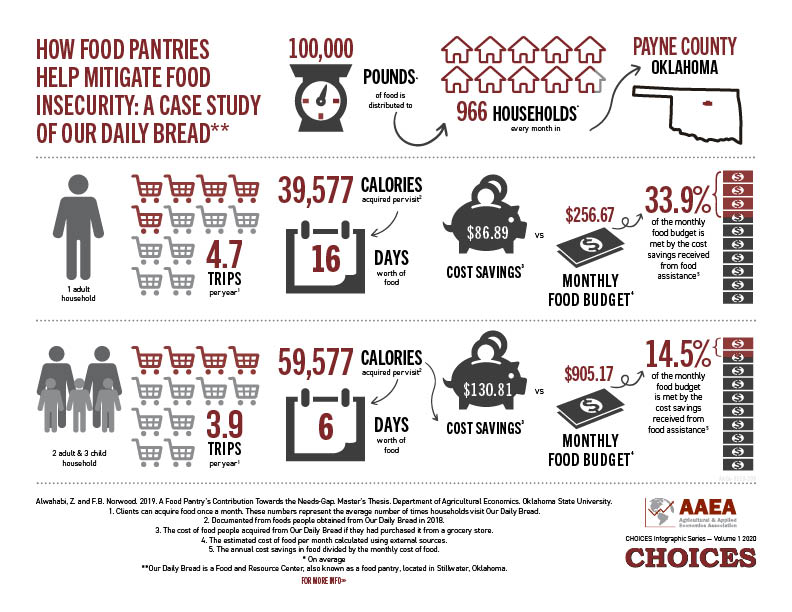
Zuhrah Alwahabi (zuhrah@ostatemail.okstate.edu) is graduate student, Department of Agricultural Economics, Oklahoma State University, Stillwater, OK.
Aaron Ates (aates@ostatemail.okstate.edu) is graduate student, Department of Agricultural Economics, Oklahoma State University, Stillwater, OK.
F. Bailey Norwood [corresponding author] (bailey.norwood@okstate.edu) is professor, Department of Agricultural Economics, Oklahoma State University, Stillwater, OK.
Alwahabi, Z. 2019. A Food Pantry’s Contribution Towards the Needs-Gap. (Master’s Thesis). Oklahoma State University, Stillwater, OK. Retrieved from https://shareok.org/handle/11244/10460.
Food pantries do not collect data on the individual foods households receive, making it difficult to measure the aid they provide and limiting their reporting to only pounds of food distributed and number of households assisted. This infographic uses data collected on the actual food choices for 2,031 households receiving aid from a food pantry in 2018, allowing us to illustrate their assistance provided for different sized households both in terms of the amount of calories acquired and the amount of money saved. After viewing the infographic and noticing the per person benefits are much larger for smaller households, this food pantry altered their food distribution strategy to reduce the inequities of their assistance.
